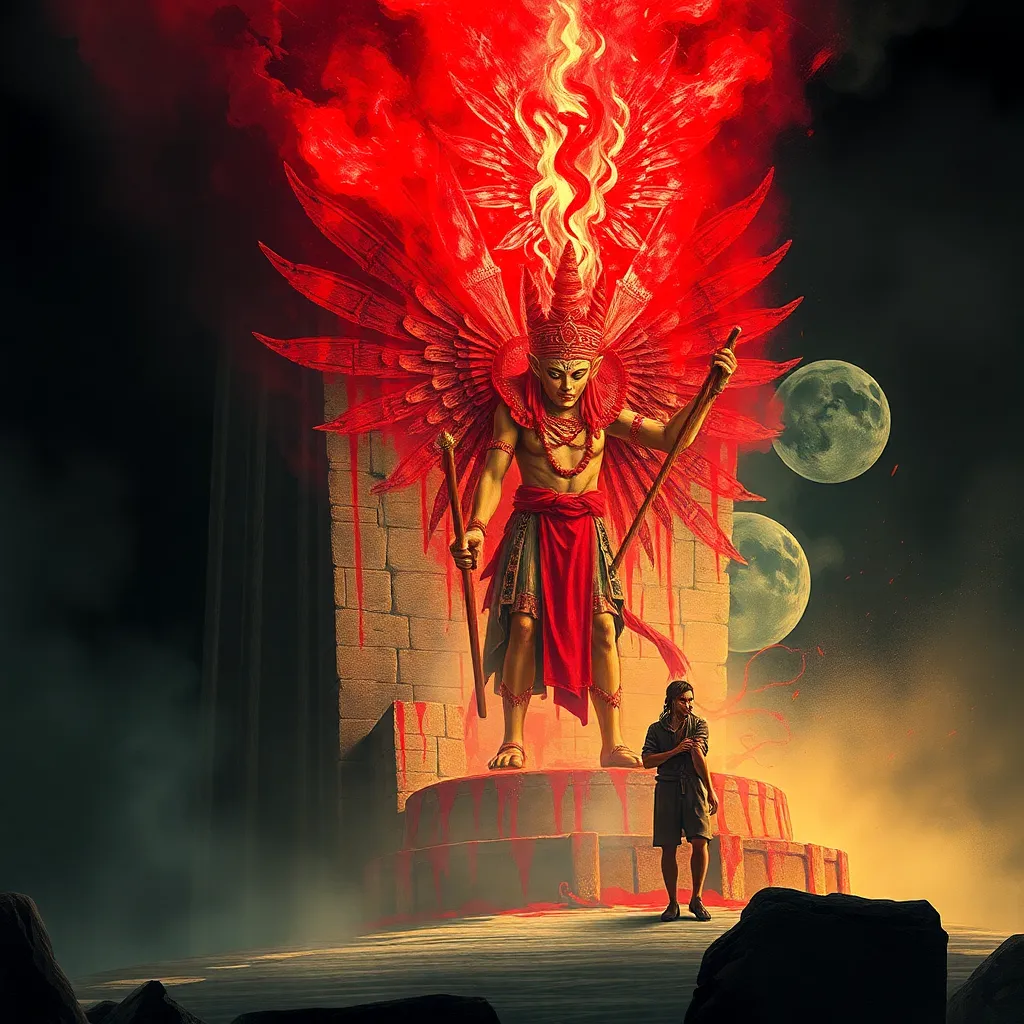The Anubis Myth: A Story of Morality and Justice
I. Introduction
Anubis, one of the most recognizable deities in ancient Egyptian mythology, is often depicted as a man with the head of a jackal. He holds a crucial role in the ancient Egyptian understanding of the afterlife, serving as the god of mummification and the protector of tombs. His significance lies not only in his association with death but also in the ancient Egyptians’ profound emphasis on morality and justice.
Throughout history, morality and justice have been cornerstones of human culture, shaping societies and guiding ethical behavior. The myth of Anubis presents a wealth of moral lessons that continue to resonate today. This article will explore these lessons, examining how Anubis embodies the principles of justice and morality in both ancient and modern contexts.
II. The Origins of Anubis
The origins of Anubis can be traced back to the early dynastic period of ancient Egypt, where he emerged as a vital figure in funerary practices. As the god associated with mummification, Anubis played a key role in ensuring that the deceased were properly prepared for the afterlife. His jackal form symbolized protection and vigilance, as jackals were often seen scavenging in cemeteries, further connecting him to death.
Anubis’s role extended beyond mere mummification; he was also considered a guide for souls navigating the complex journey to the afterlife. His presence was essential for the deceased to find peace in the underworld, making him one of the most important deities in the Egyptian pantheon.
III. The Weighing of the Heart
One of the most significant aspects of Anubis’s mythology is the weighing of the heart, a critical judgment process that takes place in the Duat, or the Egyptian underworld. In this process, the heart of the deceased is weighed against the feather of Ma’at, the goddess of truth and justice. This ritual served as a final assessment of one’s life and moral character.
The heart, in ancient Egyptian belief, was seen as the seat of emotion, thought, and morality. It was believed that a pure heart would balance perfectly with the feather, indicating a life of virtue and integrity. Conversely, a heart weighed down by wrongdoing would tip the scales, leading to dire consequences.
Anubis’s role in this process was multifaceted; he not only weighed the heart but also guided souls to the Hall of Ma’at, where the judgment took place. This highlights his importance as both a protector and a judge, reinforcing the idea that morality is paramount in the journey after death.
IV. The Concept of Ma’at
Ma’at represents the ancient Egyptian concept of truth, balance, and cosmic order. Central to Egyptian society, Ma’at was not merely a philosophical idea but a guiding principle that informed laws, governance, and personal conduct. Upholding Ma’at was essential for harmony in both the mortal and divine realms.
The relationship between Ma’at, truth, and justice is profound. Anubis embodies these principles by ensuring that the judgment of souls is fair and just. His actions reflect the belief that morality is essential for a harmonious existence, emphasizing that one’s actions in life have lasting consequences in the afterlife.
V. Morality in the Anubis Myth
The judgment process facilitated by Anubis carries significant moral implications. It serves as a reminder that every action has consequences, and individuals are accountable for their choices. The myth teaches that a life led by virtue will be rewarded, while wrongdoing will lead to punishment.
Key lessons derived from the Anubis myth include:
- The importance of integrity and personal accountability.
- The belief that morality is central to human existence.
- The understanding that one’s legacy is shaped by their actions.
These lessons resonate with the fundamental ethical principles found in various cultures, suggesting that the quest for justice and morality transcends time and geography.
VI. Anubis in Modern Context
The teachings of Anubis remain relevant in contemporary society, where discussions about justice, morality, and accountability persist. The Anubis myth parallels modern concepts of justice, as it emphasizes the need for fairness and equity in judgment.
In popular culture, Anubis has gained recognition in literature, film, and art, often symbolizing the duality of life and death, as well as the moral struggles faced by individuals. His portrayal serves as a reminder of the importance of ethical conduct, even in modern narratives.
VII. Interpretations and Adaptations
Throughout history, interpretations of Anubis’s role have evolved, reflecting changing societal views on morality and justice. In ancient texts, Anubis was revered as a benevolent guide, but in some later interpretations, he was portrayed with more complexity, embodying both judgment and mercy.
Adaptations of the Anubis myth can be found in various forms of art, literature, and film. These adaptations often explore themes of death, the afterlife, and the moral dilemmas faced by individuals, showcasing how Anubis’s story continues to inspire and provoke thought about ethical living.
VIII. Conclusion
In summary, the myth of Anubis serves as a powerful narrative that explores the themes of morality and justice. From his origins in ancient Egypt to his continued relevance today, Anubis embodies the principles of integrity and accountability, reminding us of the importance of our choices and actions.
The enduring legacy of Anubis as a symbol of morality and justice invites reflection on the ancient beliefs that continue to shape our understanding of contemporary values. Ultimately, myths like that of Anubis offer invaluable insights into the human experience, helping us navigate the complexities of morality in our lives.
https://www.youtube.com/watch?v=8EBRXMvDTXg



